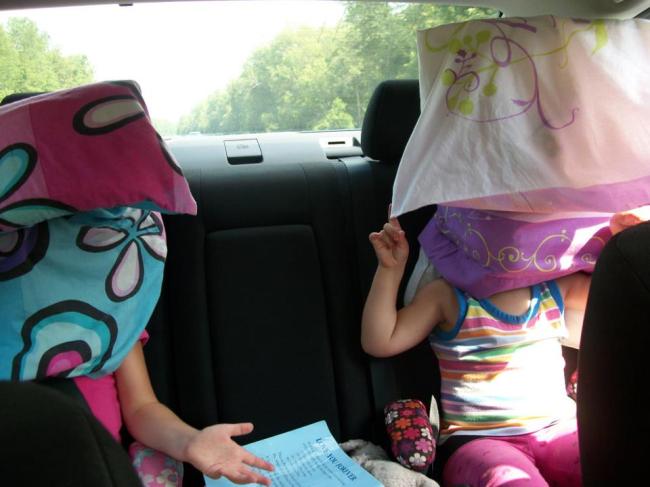
I thought I might write about dandelions today. Since there are so many of them around, it seemed timely. But the nodding yellow puffs on my lawn (and your lawn, and her lawn, and his lawn, and everyone’s lawn) will have to wait – because something else caught my attention: school security policies. A few years ago, a man with a sawed-off shotgun entered a school in Buckingham (not far from Ottawa), threatening to kill everyone. He wandered the corridors for about fifteen minutes, while the school was in lockdown mode, and the secretary called 911. The incident ended well, with nobody hurt and the gunman apprehended by police. This resulted in a change in security protocol at the school Fiona and Bridget attend. People used to be able to wander in and out at will. The doors are now locked at all times. There is a buzzer that you press to alert the secretary to your presence, and she unlocks the door for you.
According to this article, students at one Long Island, NY, high school will now have to carry all books and belongings in clear plastic bags – backpacks are no longer allowed. In addition to this, they are locked out of their lockers for the rest of the school year. For a little while, all but one washroom for each gender had been shut down, and students had to sign in and out to use the toilet. This restriction has been eased a little: there are now four washrooms open to the students (yes, four toilets for over a thousand students), which will be monitered, but nobody will have to sign in or out. These measures have been adopted in response to a recent rash of threats, including at least one reference to a bomb.
I read a blog post about it, called “You will understand why this high school banned backpacks”. Know what? I don’t understand it – and I wouldn’t accept it. It’s nothing but a placebo, a sugar pill to calm the screaming masses. As one commenter put it, it’s “security theatre”. The buzzer on the front of my daughters’ school won’t stop anyone from entering. Mr. Coo-Coo with his gun and his plan won’t be daunted by having to press a button, and will probably be able to bluff his way in even if he’s questioned (which he likely won’t be until he’s in, at which point it’s too late). As for the Wantagh High School, banning backpacks and sealing lockers isn’t going to do a whole lot to make people safer, either. Kids can pack heat anywhere – not just in their backpacks. Why don’t we make them wear see-through clothes? How about x-rays and cavity searches before each school day? Oh, and an armed security guard in each classroom – and two in the gymnasium, of course. While we’re at it, why not re-think the concept of school altogether? Instead of making our precious lambs leave their bubble, why not have them take their courses online? Since it’s unlikely that we’ll all agree on a line, let’s not have one. Let’s just go all the way to Crazy Town, together, in a high-security, unmarked, windowless, peanut-free bus.
The thing is, there is risk everywhere. Leaving your house elevates your risk of being robbed, beaten, run over by a car, eaten by a bear, attacked by a dog or a rabid raccoon, stung by a bee. Driving around is dangerous. Walking instead of driving is dangerous. E.coli and listeria lurk in our bagged salads and deli meats. You could talk to other people, but what if they’re stalkers or sociopaths or sales reps for Tupperware or Avon or Lia Sophia? Escalaters, elevators, stairwells – tripping, falling and dying hazards, all. Shall we tear off the top six / eight / twenty-five floors of every building, and have everything at ground level? You could go to the library or a park to hang out, but germs! Never mind waterslides or amusement parks or ziplining – many parents don’t even let their children go to public washrooms by themselves until they’re into the double digits. Our society has become ridiculously risk-averse, even though we’re safer than we’ve ever been – and it’s disturbing.
Yes, terrible things happen – sometimes, with no logic or even warning. A bomb threat at a school reaches into every parent’s heart and strikes at their deepest, darkest fears. But we have to rise above our hysteria and really think about our response …. We cannot live like rabbits, frozen or running scared at every rustle and twig snap. How much freedom are we willing to leverage to feel safe? Because that’s really all we’re doing – we’re changing how we feel. We shouldn’t pour time and money into things that won’t help anybody just so that we look like we’re doing something. Doing nothing is better than that.
“Those who would give up Essential Liberty, to purchase a little Temporary safety, deserve neither Liberty nor Safety.” – Benjamin Franklin




